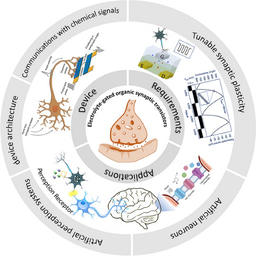Creating a Positive School Climate For Teachers
Published in Neuroscience

Introduction
School climate is a topic educators care about but they don’t always understand whether their actions contribute to fostering positive or hostile school climates. Although our first priority is always the students, I worry a lot about how teachers feel in their prospective school climates and it comes from personal experience because I spent 11 years in the role of teacher.
In my career as a teacher in the United States of America, I worked for several principals. One in particular had an impact on me and that impact was not positive. She checked teachers lesson plans on a rotating basis, even though she never gave feedback on what was being taught. We soon found out she was making us hand those lesson plans in as a way to control us. When we walked down the hallway during our prep, she would stop us and ask where we were going, and when we had to collaborate as teachers, those collaborative sessions were more about compliance than creative thinking.
Professionally, the situation turned into a hostile working environment and it became difficult to remember whether the teachers were the adults in the school. I left that experience knowing I wanted to be a principal who treated students and adults differently.

According to the National School Climate Center, school climate is defined as “the quality and character of school life. School climate is based on patterns of students', parents' and school personnel's experience of school life and reflects norms, goals, values, interpersonal relationships, teaching and learning practices and organizational structures.”
I spent 8 years as a school principal, and I define school climate as how we feel when we walk into a school building. Do we feel like part of the community or an unwelcome guest? When I say “we”, I mean students, teachers, leaders and families. It begins by understanding that not all teachers, students and family members are at a place where they have the same focus and that has everything to do with self-efficacy.
Self – Efficacy
As a principal, I wanted to foster a more supportive and inclusive school climate where people were welcome in school regardless of whether they always agreed with me or not. I wanted our school community to be a place where we learned together and over the years, I have found that self-efficacy plays a very important part in that learning.

Bandura (1994) defines self-efficacy as “people's beliefs about their capabilities to produce designated levels of performance that exercise influence over events that affect their lives. Self-efficacy beliefs determine how people feel, think, motivate themselves and behave.”
Additionally, Tschannen-Moran and Gareis (2004) suggest that “Self-efficacy beliefs are context-specific, however, people do not feel equally efficacious for all situations.” For example, we may have a teacher who feels comfortable de-escalating a student in the hallway, even if that student may not be in their classroom. But that same teacher is resistant to use scaffolding in the classroom, and that is all due to the fact that they feel efficacious when it comes to de-escalating a student, but not when it comes to using scaffolding in the classroom.
To build collective efficacy among teachers and leaders, which Tschannen-Moran & Barr (2004. p.190) define as, “the collective self-perception that teachers in a given school make an educational difference to their students over and above the educational impact of their homes and communities,” we must make sure our school climates are a place where teachers feel supported and safe, so they can collaborate together in a way that will have a deep impact on student learning.

All of this revolves back to school climate. Adults in the school will not feel comfortable challenging opinion if they work with a school leader more hostile than supportive. Additionally, adults will not work deeply together if their previous experiences of collaboration taught them they did not have a true voice in the process. All of those past experiences contribute to how they feel now when they have the opportunity to collaborate.
Even after teachers and leaders have done the hard work to gain trust and foster a school climate that is supportive and inclusive of diverse thinking, they must also ensure all members of the collaborative group (for example, stakeholder group, PLC, etc.) make a difference.
The following are suggestions on how to make sure everyone plays a part in that collaborative process:
- Define why each member is a part of the team.
- Define the expectations of each team member.
- Co-construct a goal around an initiative.
- Assign duties for each member of the team.
- Promote and support discourse in the process.
Finally, we need to make sure we always meet people where they are and not where we already expect them to be. Our focus is not always their focus. Our area of expertise is not always their area of expertise. The old saying “many hands make light work” rings true when a school community has created a climate where people admit they don’t know everything and are open to learning more through collaboration on a level playing field.
References
Bandura, A. (1986). Social foundations of thought and action. Englewood Cliffs, NJ: Prentice-Hall.
Bandura, A. (1997). Self-efficacy: The exercise of control. New York: W.H. Freeman and Company.
Bandura, A. (2000), “Cultivate self-efficacy for personal and organizational effectiveness”, in Locke, E.A. (Ed.), The Blackwell Handbook of Principles of Organizational Behavior, Oxford, Malden, MA, pp. 120-36.
DeWitt, Peter and Sean Slade (2014). School Climate Change: How Do I Build a Positive Environment for Learning. ASCD. Alexandria, VA.
DeWitt, Peter (2016). Collaborative Leadership: 6 Influences That Matter Most. Corwin Press/ Learning Forward. Thousand Oaks, CA.
DeWitt, Peter (2017). School Climate. Leading with Collective Efficacy. Corwin Press/Ontario Principals Council. Thousand Oaks, CA.
Tschannen-Moran & Barr (2004)Fostering Student Learning: The Relationship of Collective Teacher Efficacy and Student Achievement. Leadership and Policy in Schools, v3 n3 p189-209 Sep 2004.
Tschannen-Moran and Gareis (2004) "Principals' sense of efficacy: Assessing a promising construct", Journal of Educational Administration, Vol. 42Issue: 5, pp.573-585
Follow the Topic
Your space to connect: The Psychedelics Hub
A new Communities’ space to connect, collaborate, and explore research on Psychotherapy, Clinical Psychology, and Neuroscience!
Continue reading announcement


Please sign in or register for FREE
If you are a registered user on Research Communities by Springer Nature, please sign in
As a current HS teacher, I really appreciate this post. I'm fortunate to work for a principal now who trusts me and let's me "do my thing" in the classroom. That alone makes the school environment, for me, much more pleasurable...I know no one is looking over my back and I'm free to do what I believe is best for the students in my classroom.
Thank you Blake. I appreciate the comment. I'm glad to read that your principal is supportive. Every teacher should have the opportunity to work in a supportive school climate.